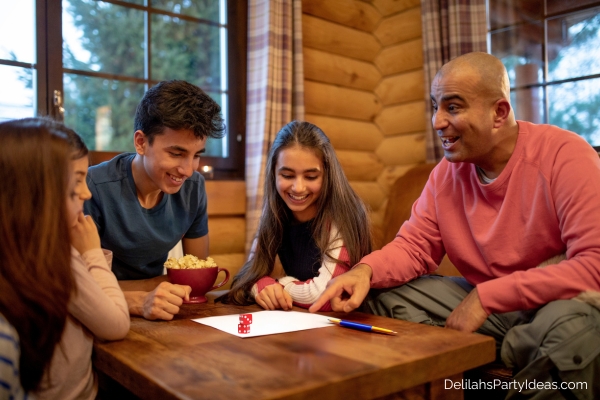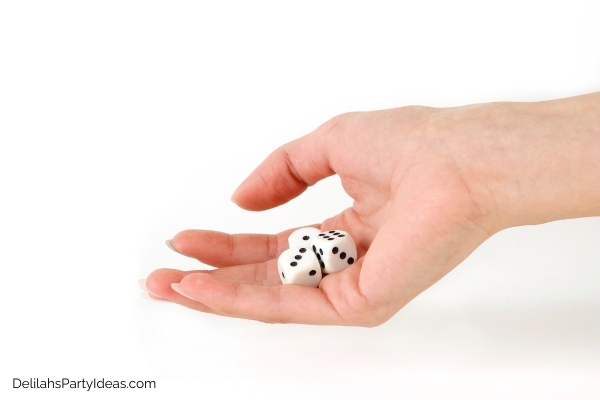Going to Boston Dice Game
If you’re looking for a fun, easy-to-learn dice game that everyone in the family can enjoy, you’re going to love Going to Boston. It’s simple, it’s lively, and it brings out just the right amount of friendly competition, perfect for family nights, classroom math games, or parties with friends.
Here is everything you need to know about the Going to Boston dice game: where the name comes from, the detailed rules, how to play step-by-step, and even a few fun variations you can try to keep the game fresh. Ready to roll? Let’s get started!
Why Is It Called “Going to Boston Dice Game”?
First, the burning question: why is it called Going to Boston?
The exact origins of the name are a little fuzzy (like many traditional games that have been passed down over generations), but the most popular theory is that it’s named after a traveling-style of dice game that became popular during the 19th century, particularly in New England, and especially in, you guessed it, Boston.
Whatever the true origin, the name has stuck, and “Going to Boston” remains a part of family game traditions even today!

What You’ll Need to Play
One of the best things about Going to Boston is that it’s super low-prep. All you need is:
- Three dice (although you can adapt it with more or fewer if needed, more on that later)
- Paper and pencil (to keep track of scores)
- A flat surface to roll the dice on
- At least two players (but the more the merrier!)
Optional but fun:
- A little prize for the winner
- A special dice-rolling container like a small bowl or box to make the dice-rolling even more exciting!
Basic Rules of this Dice Game
At its core, Going to Boston is about rolling three dice, keeping the highest die each round, and adding up your points to try to get the highest total.
Here’s the breakdown:
- Each player rolls three dice.
- After the roll, the player picks the highest die and sets it aside.
- They then roll the remaining two dice.
- Again, they select the highest die from the roll and set it aside.
- Finally, they roll the last die.
- The three chosen dice (one from each roll) are added together for that player’s score for the round.
- After everyone has taken their turn, the player with the highest total wins the round!
You can decide ahead of time how many rounds to play, first to win five rounds, highest score after 10 rounds, or whatever fits your time and energy level.

How to Play Going to Boston: Step-by-Step Instructions
Let’s walk through it a little more slowly to make sure you’ve got it.
Step 1: Roll Three Dice
- Player 1 goes first. They shakes all three dice and rolls them onto the table.
- Let’s say the dice show: 4, 2, and 6.
Step 2: Pick the Highest Die
- They pick the highest die, which is 6, and sets it aside.
Step 3: Roll the Remaining Two Dice
- Now the same player rolls the two remaining dice (4 and 2).
- They roll and gets 5 and 1.
Step 4: Pick the Highest Die Again
- They pick the 5 and sets it beside her 6.
Step 5: Roll the Last Die
- The same player now rolls the last remaining die (the 1 from the original roll).
- They roll and gets a 3.
Step 6: Add Up the Score
- Player one’s three selected numbers are 6, 5, and 3.
- They add them up: 6 + 5 + 3 = 14 points for the round.
Now it’s Player two’s turn to do the same process, then player three and so on.
At the end of the round, whoever has the highest total wins that round.
Simple, right? Yet the excitement of hoping for high rolls and watching the scores climb makes it surprisingly engaging!
Going to Boston Strategy Tips
Even though Going to Boston is mostly luck (after all, you can’t control the dice!), there are a few tips that can make the game more strategic and fun:
- Always pick your highest die: It sounds obvious, but sometimes younger players get excited and might forget. Highest numbers first gives you the best shot at a great total.
- Cheer each other on: Half the fun is in the cheering, laughing, and suspense of each roll!
- Stay focused on the final roll: Sometimes the last die roll can make or break a round. A well-timed 6 can turn a decent round into a winning one.
Variations to Spice Things Up
Once you master the basic version of Going to Boston, you can try some fun twists:
1. “Boston Marathon”
Instead of just three dice, start with four or five dice. Players still pick the highest die after each roll and keep going until only one die remains. Bigger totals = bigger excitement!
2. “Double Trouble”
Use two sets of three dice (so six dice total) and let players roll two dice per roll, keeping the highest two dice instead of one each time. This adds a layer of strategy and bigger numbers.
3. “Boston Knockout”
Each round, the player with the lowest total gets knocked out. Play until only one player is left standing, the ultimate winner!
4. Classroom Math Version
Teachers sometimes adapt this game for classroom fun by making students add, subtract, or even multiply the dice instead of just adding them. It’s a fantastic way to sneak math practice into a game without kids even realizing they’re learning!
Why We Love Going to Boston Game
Here’s why Going to Boston has stood the test of time:
- It’s fast-paced. No long, slow turns, everyone stays engaged.
- It’s easy for all ages. Even younger kids can join in without complicated rules.
- It’s portable. Heading to a picnic, camping, or a family gathering? Toss a few dice and a notebook in your bag, and you’re ready to go.
- It’s full of suspense. You never know what’s going to happen on that final roll!
Honestly, it’s one of those games that captures that old-school magic: simple materials, tons of fun, and lots of laughter.
In a world full of complicated video games and endless entertainment options, there’s something incredibly refreshing about a simple dice game like Going to Boston. It’s quick to learn, easy to play, and brings people together in that fun, no-frills kind of way.
Whether you’re looking for a rainy-day family activity, a classroom brain break, or a nostalgic game night hit, Going to Boston fits the bill beautifully.






